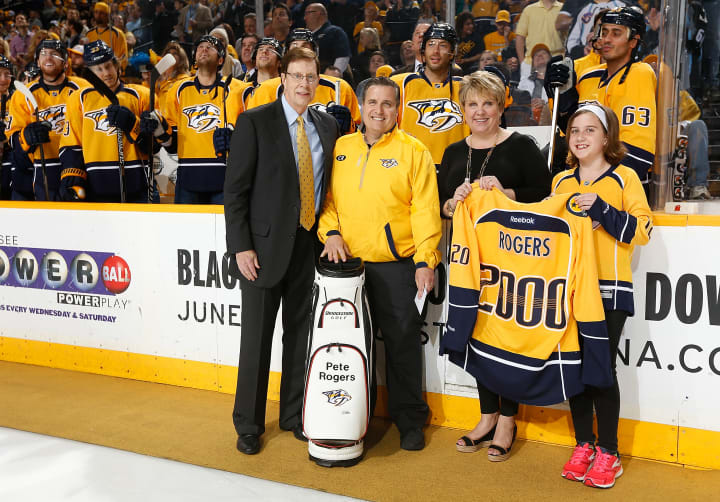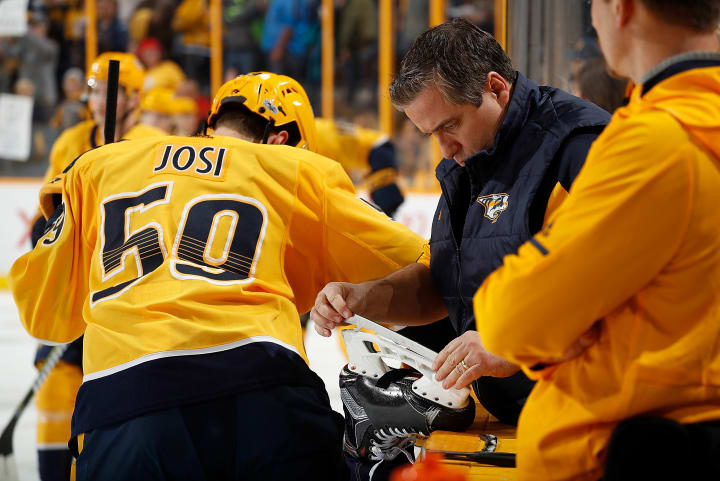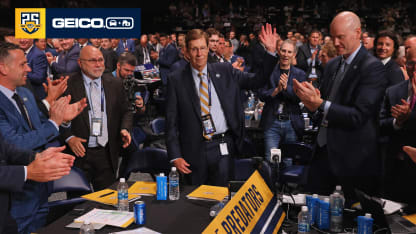We’ve Taken Care of Everything
A day one employee, Rogers and his assistant Jeff Camelio - now the Seattle Kraken’s equipment manager - saw to the equipment needs of the NHL’s newest franchise, building everything from the ground up.
“I moved down to Nashville at the end of June and we started playing in October, so it was tough,” Rogers said. “I had some experience doing it with an East Coast League team in Hampton Roads, but this was unique.”
Case in point, with two months to go before opening night, a former employee - who Rogers kindly declined to identify - gave Pete the wrong color code for the team’s pants.
“When we figured it out, it was the middle of August,” he said. “Thankfully, there are a bunch of other teams that use that same blue, so we were able to turn it around quickly. That's just one of the many challenges we had.”
Another challenge came from the Predators practice facility, or perhaps more accurately, the lack thereof.
“Our practice facility wasn't built until almost the end of the first season, so we were dressing and driving over from the arena when we had to skate,” Rogers recalled. “The first time guys skated, we didn't have glass on the sides, just the end boards. Things just weren't in yet.
“But, you know, those experiences all make you better at your job in the long run.”
They Call Him the Working Man
They don’t crack the scoresheet and you can’t buy their jerseys in the team store, but on any given week, Rogers along with Assistant Equipment Manager Brad Peterson and Equipment Coordinator Mike Bingham likely put in just as many hours, if not more, than your favorite players.
“It’s well over 100,” Rogers said. “We look at the schedule and that kind of dictates it. Obviously, when you have a game. You have practice and there's so many things that go into a game day. But most of our jobs are about preparing for the next day. And not one day is ever the same.”
On road trips that span the continent and the calendar, equipment bags need to be packed up, driven to the airport, loaded onto planes, then unloaded, unpacked and assembled in a different facility nearly every day.


























